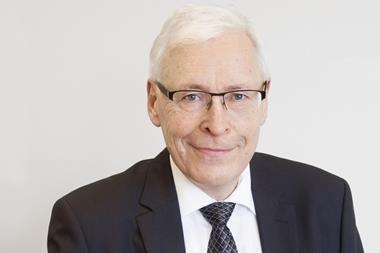Drastic changes in labour and tax laws are required to improve occupational retirement systems, says Aba
Pension systems all over the world are under increasing strain due to rapidly aging populations. It is therefore not surprising that demographic change puts pressure on the German social-security system as a pay-as-you-go pension scheme. To solve the problem, it is necessary to take a closer look at the retirement income and the sources it comes from. The German three-pillar based pension system consisting of social-security, occupational and private pension provision can be characterized as follows:
l strong mandatory first pillar,
l second pillar voluntarily funded, defined benefit system (DB),
l third pillar private insurance contracts, savings accounts, investments.
Social-security, the mandatory first pillar
The statutory social security scheme ensures that workers will be able to maintain an adequate standard of living in retirement. All wage and salary earners are required by law to be members of that scheme. Self-employed persons who are not compulsorily insured by virtue of their memebership of certain trades can join
voluntarily.
Contributions (currently 19.5% of gross earnings) are levied up to a certain income level (at present in west Germany DM 8,500 monthly). Employer and employee contribute half each. The scheme pays old-age and invalidity pensions. After the death of an insured person the dependants receive a proportion of the pension.
The size of the pension depends on the amount of insured income from employment. The average pension after 45 years
of work is about 70% of the average net income.
Occupational pensions the second pillar
More than 160 years ago, the first occupational pension systems were implemented.
Today, most occupational plans in Germany are financed internally by accounting for company pension liabilities via book reserves, the so-called ‘Pensionsrückstellungen’. They are built up in companies’ balance sheets. There is no obligation to build up separate pension assets on the asset side of the company’s balance sheet and there are no investment restrictions. For the benefit of the employees, 25 years ago, an overall insolvency protection system was introduced. It is financed by all employers on a solidarity basis.
Pension funding outside the company is possible via life assurance contracts, so-called ‘Direktversicherung’ and via two types of pension funds: a special assurance company so-called ‘Pensionskasse’ and a support fund named ‘Unterstützungskasse’.
The asset management of life assurance companies and Pensionskassen is very strictly regulated under the German Insurance Supervisory Law. For example, the equity allocation in an insurance portfolio
is limited to 35%.
There are almost no restrictions on support funds. For example, it is possible to invest the assets entirely in equity loans made to the sponsoring company. Therefore support funds that invest their assets directly cannot be fully funded and have to be members of the before mentioned insolvency protection system.
The second pillar has covered – on a voluntary basis – by the end of the 1970s about 70% of all employees, providing an average of about 10 – 15% of final income as benefits. Since then, however, one has had to observe a stagnation and decline for various reasons: declining growth, cost pressures, restrictive legislation and jurisdiction. This is alarming, since efforts to reform the legislation will lead to a reduction of social security benefits. The pension gap will grow. To fill this gap one has to find ways to increase the benefits from the second and third pillars.
‘Model: Second Pillar’
There is no doubt that a healthy development of the second pillar is prevented by permanent changes to the German tax law. There is a growing need for better ways of an external funding of pension promises, but these ways have to fit into the basic German ‘retirement philosophy’. To really fit into the growing gap of retirement income which social security has already created and will do so even more in the near future, pensions have to be more than simple saving plans. They have to offer old-age, disability and death coverage and they should be protected against insolvency.
In 1998, Aba presented the following list of desirable charactersistics of a German pension fund:
l The pension fund should be an indepen-dent institution whose only purpose is to finance occupational pensions.
l Flexibility in pension plan design ranging across the defined benefit to defined contribution spectrum is necessary.
l Old-age, disability and/or death cover- age should all be offered.
l An actuarial funding method for guaranteed benefits should be used.
l The fiscal treatment should include tax exemption of the fund (within certain reasonable limits) and tax deductibility for employer contributions. Employees should not be fiscally affected by employer contributions during their working lives: only benefits actually paid should be considered as taxable income (EET system).
l There should not be any restrictions on investment management (except for self-investment), as restrictions, in general, lead to sub-optimal asset management.
l There should be a solvency protection system, consisting of ongoing control by actuaries and trustees and institutional protection of both the fund’s assets and, in the case of DB plans, the unfunded liabilities.
The Aba model furthermore identifies the need for drastic change in labour law and tax law as being fundamental to improving the range of occupational retirement systems. In our view, it is not enough to create adequate pension funds: More specifically, its main suggestions are:
l DC plans should be integrated into labour law and tax law for all financing methods.
l Support funds should be developed in the direction of a pension fund.
l The fiscal treatment of all financing methods should be adapted in order to conform to international standards.
The chances of necessary changes in the area of retirement provision are not as small as many Germans think. The legislators know that there is a great need to modernise the German system by moving towards more funded plans. But it will be Aba’s job to promote the fact that retirement provision is more than a savings plan.
Aba, German Federation for Occupational Retirement Provision
Managing Director: Klaus Stiefermann
Address: Rohrbacher Strasse 12,
D—69115 Heidelberg
Telephone: +49 6221 21422
Fax: +49 6221 24210
Germany
Population: 81.9m
Employees: 30.8m
Unemployed: 4m
Pensioners (first pillar): 21.6m
GDP: DM3,542bn
Total supplementary pension scheme assets (second pillar): DM515bn
Sources: Statistics Bundesamt, Aba 1996 figures
The Aba, the German Federation for Occupational Retirement Provision, has a long and good tradition.
Founded in 1938, Aba has more than 1,200 members in the occupational pension plan. The members are employers and their organisations, unions, providers of pension schemes (Pensionskassen, Direktversicherungen, Unterstützungskassen), consultants, actuaries etc., making Aba the only impartial promoter of the occupational pension idea in Germany. Over the years, Aba has earned enormous recognition by the German government and all those government offices involved in questions related to pension schemes.
Four experts employed on a full-time basis, their staff and many voluntary supporters try to support the association’s aim.
Monitoring government actions and public discussions regarding retirement provision, consultation on all areas of occupational pensions, educating hundreds of experts per year, publishing the only special periodical on
retirement provision are only a few fields where Aba works.














No comments yet